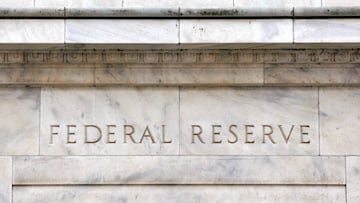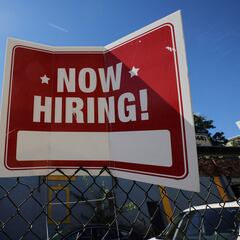How are unemployment and inflation related?
After nearly a year of rate hikes from the Federal Reserve, the labor market shows signs of softening. What will be the impact on workers and their wages?


The announcement of major layoffs from large corporations, coupled with the various bank collapses seen over the last six months, has generated a level of economic uncertainty in the US economy not seen in over a decade. Such conditions create challenges in evaluating the impact of the Federal Reserve’s rate increases on the economy broadly and the labor market specifically.
In March, nearly a year after the Federal Reserve began increasing interest rates, the national unemployment rate is hovering at around 3.5 percent. Last month the economy added 236,000 jobs, which was much closer to what had been projected by economists, compared to January and February, where reality blew past the figures expected.
Payroll employment rises by 236,000 in March; unemployment rate changes little at 3.5% https://t.co/ZwrVfLviqL #JobsReport #BLSdata
— BLS-Labor Statistics (@BLS_gov) April 7, 2023
Have interest rate hikes led to greater unemployment?
To date, it appears that rate hikes have not led to a spike in unemployment, with the civilian labor force reaching 166.7 million workers in March —the highest number recorded in the last ten years. However, labor force participation remains lower than its pre-pandemic level. In January 2020, the participation stood at around 63.3 percent, and by May of that it year, it had fallen more than three percent to 60.1. Last month, the participation rate reached 62.6 —the highest level recorded since the pandemic ripped millions from the labor force in just a few months.
Recent growth in the labor force is being driven both by an increase in people entering the labor force and by a decline in people leaving. pic.twitter.com/62JzTq6Vu7
— Ben Casselman (@bencasselman) April 7, 2023
What is the Philips Curve, and what does it tell us about the economy?
Last week, Federal Reserve Governor Christopher J. Waller spoke at a conference about the latest debate over the usability and validity of the Philips Curve, which for decades has formed a fundamental part of monetary policy. The Philips Curve graphs the relationship between employment and wage increases, conceptualized by William Phillip. Later, economists Robert Solow, Paul Samuelson, and Milton Freedman, among others, made the connection between wage increases and inflation, which Philip had never explicitly called attention to. For these economists who continued to study the Philips Curve noted that, in many cases, as employment rises, so do wages. Why? In part because an increase in employment means that the demand for labor is increasing. Taking labor, or labor power as a commodity, as the demand increases and more workers are integrated into the labor force, the supply of labor (i.e., those unemployed) falls. Thus to continue attracting workers into the labor force, better pay and benefits may need to be offered. According to the Bureau of Labor Statistics, real wages rose rapidly in the latter half of 2020 and 2021 as a way to motivate workforce re-entry. However, by the end of 2022, these gains in purchasing power had been erased.
| Q1 - Jan, Feb, Mar | Q2 - Apr, May, June | Q3 - July, Aug, Sep | Q4 - Oct, Nov, De | |
|---|---|---|---|---|
| 2020 | $378 | $399 | $394 | $395 |
| 2021 | $396 | $394 | $392 | $390 |
| 2022 | $385 | $380 | $379 | $378 |
| 2023 | $379 (Jan/Feb only) | n/a | n/a | n/a |
Expectations and inflation: the perspective of businesses and workers
Governor Waller spoke to how inflation expectations play a role in this relationship between employment and prices. He argued that some firms, seeing that prices may move up, preemptively increase prices if “the benefits outweigh the costs.”
Taking labor as a commodity that is sold by workers to their employers, it is understood that as demand for labor increases, unemployment falls since some of those who were without work are integrated into the workforce. When unemployment is low, the supply of labor power is low, meaning that firms may need to offer higher wages since they are competing with each other for a commodity that is in short supply.
Looking at the behavior of workers, Governor Waller argued that when nominal wages are “sticky,” meaning not subject to rapid fluctuations, they “will seek to maintain their real wages by setting their wage demands based on what they think future inflation will be.” In the same vein, firms will set prices “based on what they think aggregate price inflation will be in the future, and how often and at what pace they expect to change prices.” What Governor Waller does not touch upon is the relationship between worker demands and firm expectations. Do worker-demanded wage increases factor into a firm’s expectation of inflation? If so, how does the economy avoid a wage-price spiral? A wage-price spiral begins when workers demand higher wages, and firms respond by increasing prices, and once again, workers issue their demands, and the inflationary cycle begins.
Related stories
But what Governor Waller did not mention in his discussion on the Philips Curve are the different economic conditions and shocks that lead inflation to take hold in a market. For instance, think about the impact the Russian invasion of Ukraine and the sanctions imposed by many governments on global energy markets. As import bans on Russian energy commodities were enacted, the supply began to shrink for those countries, and thus the prices of energy commodities from other sources began to rise. With demand increasing rapidly and without a sudden increase in supply, prices rose. For example, companies with international supply chains see a sudden increase in their transportation costs since the price of the fuel needed to get the commodities to the consumer has risen. But, as demand stabilizes or supply increases, prices should begin to fall.
As the price of global energy markets cooled, inflation in the US began to fall. Real wages have also been falling, and next week we will see how they faired in March. From February to March, average weekly earnings for “production and nonsupervisory employees on private nonfarm payrolls” rose from $963.10 to $966.15. In nominal terms, change is close to zero, meaning that if inflation increased at all in March, this could amount to an additional decrease in purchasing power for the average worker.

